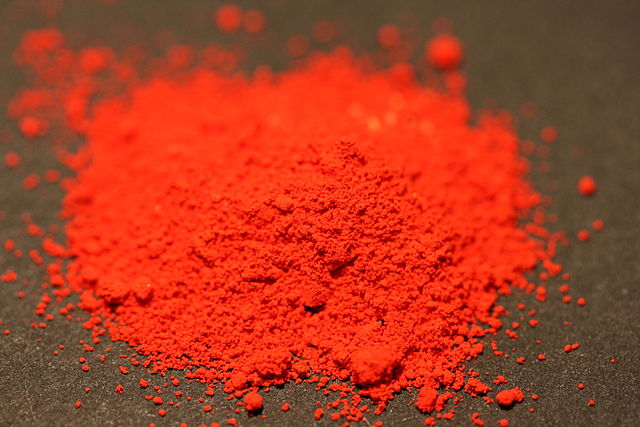Cadmium pigments are a class of pigments that contain cadmium. Most of the cadmium produced worldwide has been for use in rechargeable nickel–cadmium batteries, which have been replaced by other rechargeable nickel-chemistry cell varieties such as NiMH cells, but about half of the remaining consumption of cadmium, which is approximately 2,000 tonnes annually, is used to produce colored cadmium pigments. The principal pigments are a family of yellow, orange and red cadmium sulfides and sulfoselenides, as well as compounds with other metals.
Orange cadmium pigment
Red cadmium pigment
Yellow cadmium pigment
Cadmium-rich hemimorphite crusted on smithsonite
A pigment is a powder used to add color or change visual appearance. Pigments are completely or nearly insoluble and chemically unreactive in water or another medium; in contrast, dyes are colored substances which are soluble or go into solution at some stage in their use. Dyes are often organic compounds whereas pigments are often inorganic. Pigments of prehistoric and historic value include ochre, charcoal, and lapis lazuli.
Pigments for sale at a market stall in Goa, India
The Milkmaid by Johannes Vermeer (c. 1658). Vermeer was lavish in his choice of expensive pigments, including lead-tin yellow, natural ultramarine, and madder lake, as shown in the vibrant painting.
Titian used the historic pigment vermilion to create the reds in the oil painting of Assunta, completed c. 1518.
Miracle of the Slave by Tintoretto (c. 1548). The son of a master dyer, Tintoretto used Carmine Red Lake pigment, derived from the cochineal insect, to achieve dramatic color effects.








